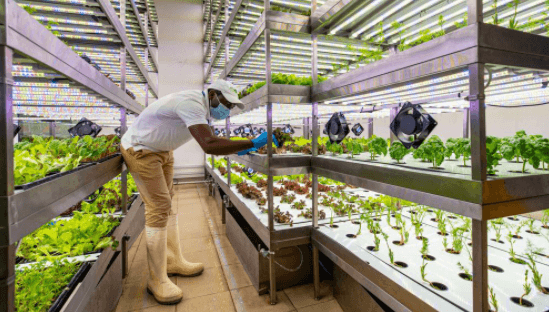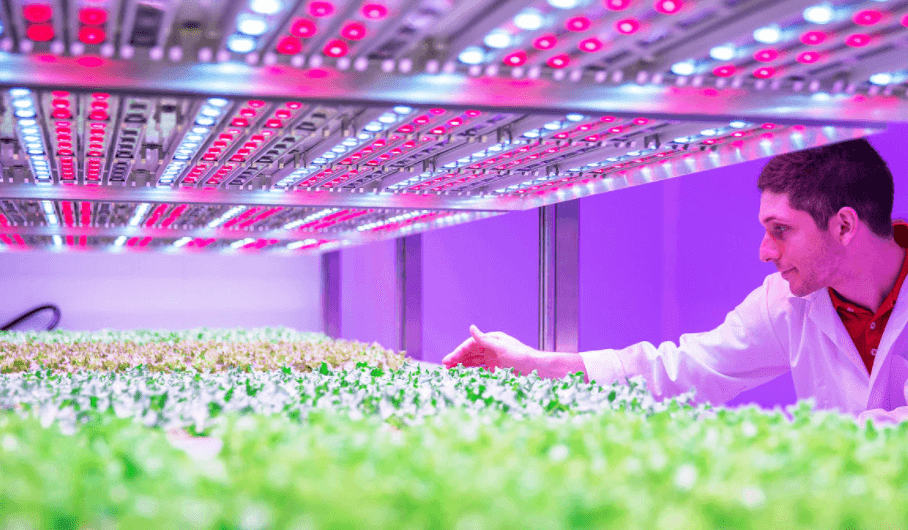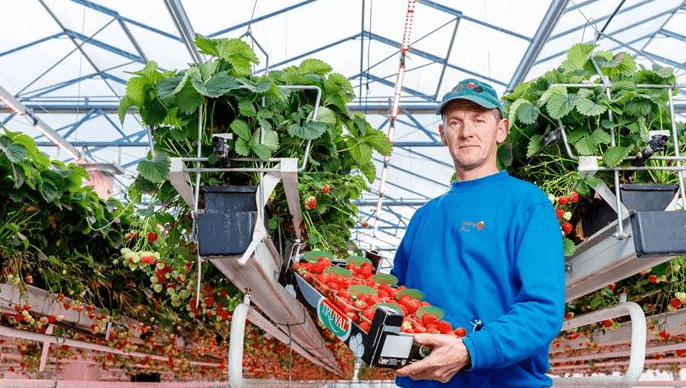Table of Contents
Indoor farming is an excellent alternative to conventional crop farming techniques. This technique uses vertical grow lights when night sets in and natural light during daytime. Also known as vertical farming, this indoor crop production method is energy efficient. Read on to learn about vertical grow lights, why they are ideal for indoor farming, and their benefits.
A vertical grow light is structured to light up a plant-producing section, often located indoors. Vertical gardens allow farmers to build a small garden area, especially if they live in limited spaces.
Understanding Vertical Farming
Vertical farming is a unique crop farming approach, often used in urban areas. Here, plants are piled vertically in a single column, enabling the farm to produce more plants in small spaces. Often, vertical farms generate good yields without requiring lots of water and other resources that traditionally grown crops require.
Why are Vertical Lights Ideal for Indoor Farming?
When growing crops in a greenhouse or indoors, vertical lights boost plant growth. Plants require light to grow up to their ideal yield and height. This farming method utilizes lesser space than conventional horizontal farming practices. Further, it augments its use by keeping growing platforms side-by-side, allowing each plant to receive sufficient sunlight.

Different forms of vertical grow lights facilitate light absorption in plant leaves by broadening their surface area with green reflective material. By so doing, more leaves can use limited space. In this case, very little light is lost on reflection because plants have to remain together.
The vertical farming concept involves growing plants in a tall building with racks stacked on top of each other. The illumination that vertical grow lights generate moves in a limited space across the rack’s length.
The configuration facilitates even light distribution for every plant, regardless of how difficult reaching some areas can be as a result of the building’s height and layout. Further, the lights are arranged close together in a specific pattern based on the plant type.
What Vertical Grow Lights are ideal for Indoor Farming?
Grow lights are specially designed electrical lights that stimulate crop growth by discharging electromagnetic spectrums that generate photosynthesis. Worth mentioning is that vertical lights do not have to simulate sunlight.
Often, the light that these lights produce is more effective than sunlight. Farmers can use grow lights if their indoor gardens cannot access natural lighting or during the winter season. Here are three types of grow lights that you can consider for your indoor farming venture.
· Fluorescent Grow Lights
These lights are ideal for farmers considering growing vegetables and herbs in their indoor farms. These bulbs are available in two groups:
- Compact fluorescent lights (CFLs)
- Fluorescent tubes
What are the Pros and Cons of Compact Fluorescent Lights and Fluorescent Tubes
Fluorescent tubes are available in varying intensities, are more efficient than many incandescent bulbs, and last longer. They are also slender, which eases their installation. They are ideal for small spaces. However, farmers will need a stabilizer to control the current fluorescent grow light models.

The tubes will also need stands instead of the traditional socket. As a result, the initial installation cost can be high. Compact fluorescent lights are more cost-friendly than many other types of vertical grow lights available.
Today, CFLs are also used in households, and they come with an up to eight years long lifespan than conventional incandescent bulbs. Further, CFLs do not discharge excess heat, which makes them energy efficient. Farmers can also position them closer to the plants without causing damage.
· HPS Grow Lights
Seasoned and commercial indoor farming enthusiasts prefer high-pressure sodium (HPS) lights. These grow lights are based on ancient technology and often generate massive heat. As a result, farmers will need to place them further to avoid damaging the plants. HPS grow lights are costly, which means they are not ideal for farmers practicing small-scale farming.
· LED Vertical Grow Lights
The red and blue LEDs emerged in the indoor farming industry in the early 2000s. They are the most efficient options in this list because the distance between the plant and the light does not have negative effects on the plant’s growth. You can keep LED grow lights further from the plant without depriving them of the light they require.
LED grow lights are ideal in creating the right environment for any form of indoor plant growing venture. However, LED lights are often more expensive than the previous options. Further, they can harm your eyes which is why people using them should wear eye protectors.
Must Read: Energy Efficiency | How To Create An Energy-Efficient Workplace?
What are the Advantages of Utilizing Grow Lights in Vertical Farming
Temperature is one of the leading factors that indoor farmers struggle with. To counter this problem, LEDs come in handy because they are highly efficient. Apart from being small in size, they generate low heat and are made using advanced technology to supplement natural sunlight in indoor crop-producing settings. Here are reasons why you should consider LEDs for your vertical farming practices.
- You can program LEDs to achieve a wide range of light hue cycles
- You can use your LED for years without replacing or even incurring maintenance expenses
- LEDs are more energy-efficient than conventional lights. Their energy efficiency does not compromise their brightness.
- LED lights do not discharge heat, making them ideal for indoor farming
- You can place your LED lights close to your plants without damaging them
- The LED technology is evolving fast, which means that the vertical farming lighting options will be more efficient and capable to execute a wide range of tasks in the future.
- LED lights produce low temperatures, meaning you can work with them without the fear of getting burned.
- LED lights are available in varying forms like bulbs, strips, and panels. You can choose what works best for your needs.
- Indoor farmers can dim their lights over a wide range, and that makes them easy to adjust without flickering
- You can get LEDs in a wide range of colors and program them easily to accomplish various light hue cycles.
Finally
LED lights have evolved over the years, making them an ideal option for indoor crop production. Grow lights will continue advancing in the future, even as more people adopt vertical farming.











